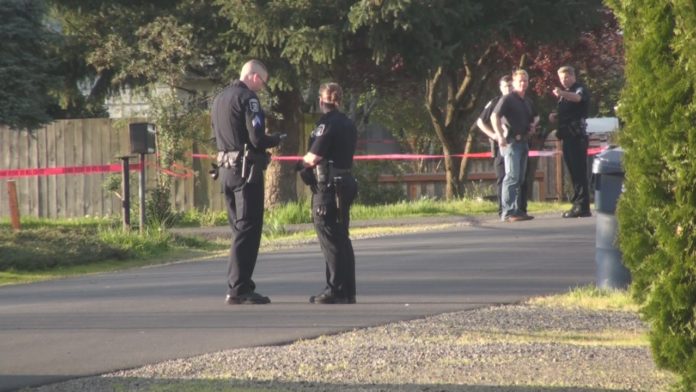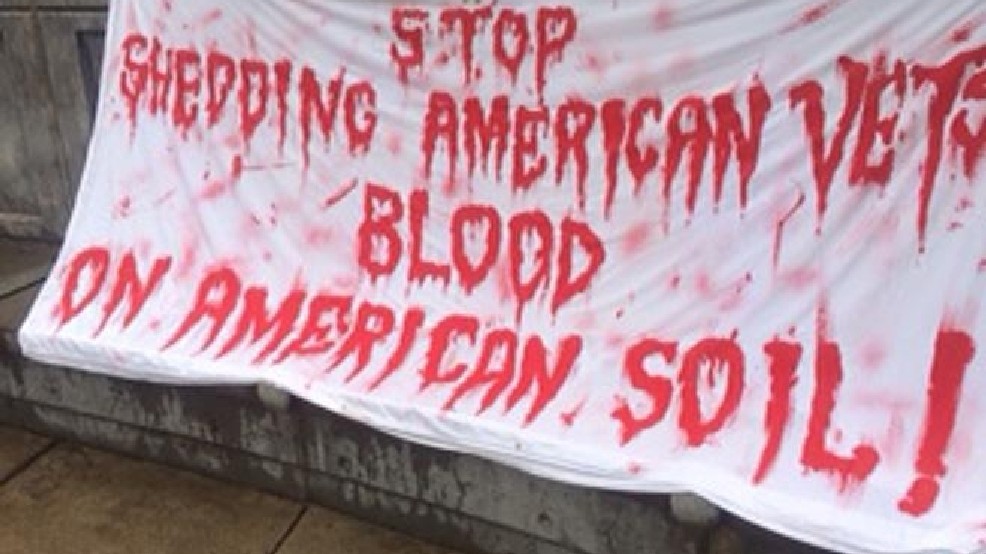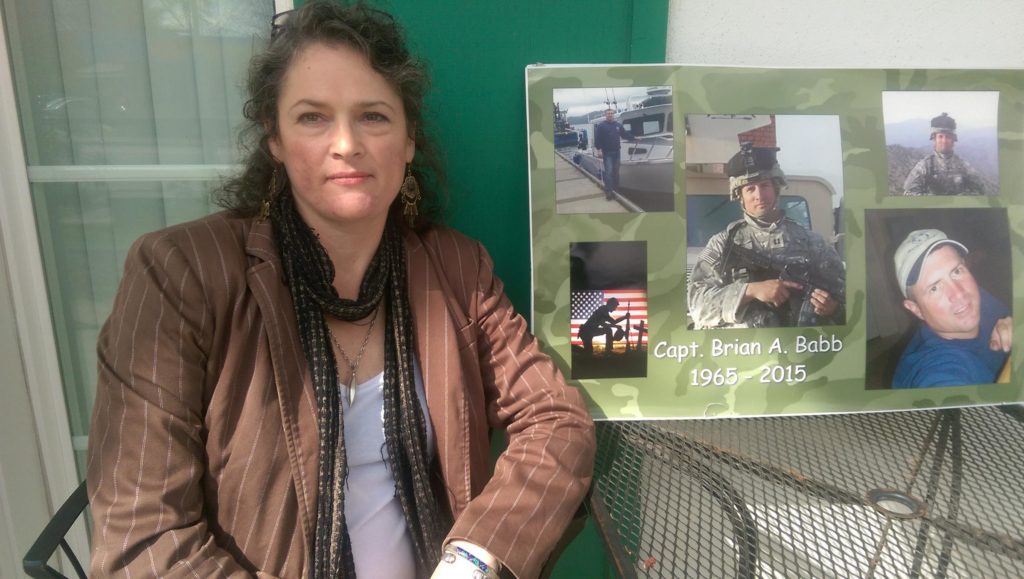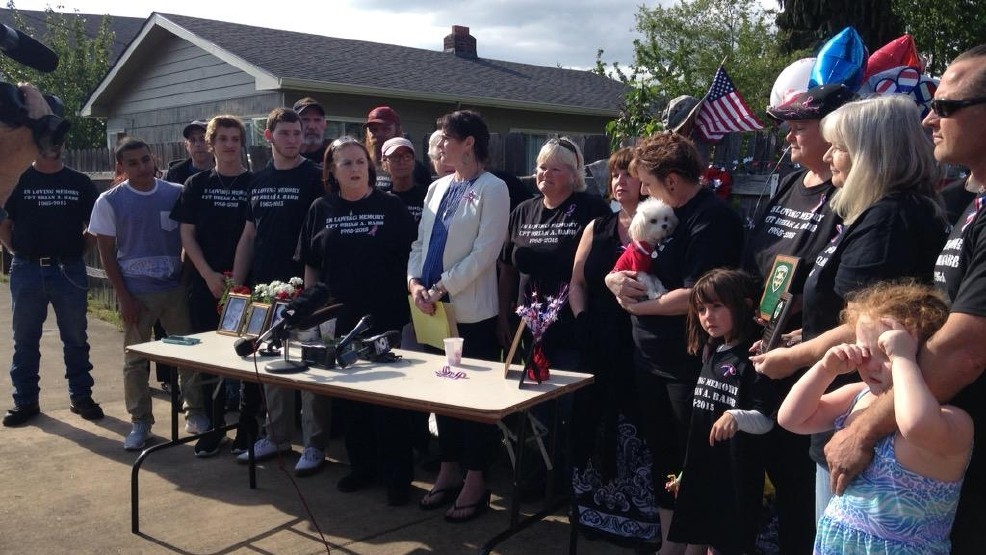
Brian Babb was a former member of the Oregon Army National Guard. Bravely, he had served his country in Afghanistan. He was deployed in 2006, but returned home a changed man. He had suffered traumatic head damage in the war and suffered from PTSD. He was under the care of a psychologist, who was helping him through a troubled time. Beth Higgins, Brian’s therapist, received a phone call from him on a fateful day in March 2015. Within an hour of Higgins phoning police to assist her patient, Brian was shot and killed.
Brian had been suffering from memory loss, heavy mood swings and severe pain. These were remnants of his time in Afghanistan. Higgins happened to swing by her office when the call from Brian came in. He told her that he had fired a handgun inside his home, just so he could “hear how it sounded.” Higgins realized that Brian was having some sort of breakdown, and concerned, contacted police for assistance. Higgins remained on the phone with Babb while police made their way to the scene. The Eugene police force showed up with an armored vehicle in full militarized fashion.
They attempted to negotiate with Brian, who came to the door unarmed several times. The last time he came to the door, however, he carried a rifle, that according to police, was unloaded. The fatal shot was taken by Officer Will Stutesman. According to Higgins, her conversation with Brian was cut short and within moments he was dead. According to Stutesman, who was perched above the armored vehicle through its window in the ceiling, Brian pointed a rifle at him. Unfortunately, the negotiator who sat beside him claims that they could see nothing, because a high fence obstructed their views. Stutesman’s claims were, however, backed up by another officer on scene who claims that he did observe Brian with the rifle.
This is yet another example of police having the inability in training – or desire to work with individuals – in a time of crisis. Brian was in need of psychological help, something that his therapist thought police could provide. Even if the shooting met the criteria for police to kill him, it doesn’t negate the responsibility that law enforcement has to serve the community. The failure of police to properly train officers on how to deal with people in crisis, has been demonstrated time and again.
Police have a way of admitting they screwed up without really accepting responsibility. This case is no different. The Police Chief, Pete Kerns, declined comment on the shooting itself, however he did state that the department “will examine every detail from the moment we first received the call to the conclusion.” This is the precursor to a whitewash by the department, however, internally you can guarantee that this case will cause a change in crisis response policy. Kerns stated it was “a very sad situation for our community,particularly for our department where we have so many veterans…and extraordinarily difficult for the Babb family.”
An Oregon newspaper, The Register Guard, reviewed the case and found many discrepancies between the official story, dispatch and radio logs, and statements made by Brian’s therapist. According to dispatch logs, officers were advised that he shot his gun out a window, when Higgins never said that. Police also advised that they told Higgins, who was still on the phone with Brian, to have him come to the door. She denies these claims, stating that they never told her to do that. Supervisors on scene had debated leaving, after Brian’s roommate left the residence unharmed. This was allegedly a key concern, however, Brian was killed nonetheless. And despite the statements from the negotiator on scene, who advised that Brian was out of sight beyond a high fence, District Attorney Alex Gardner defended Stutesman, saying that “perhaps the crisis negotiator missed what the driver saw because he was turned or looking elsewhere or in a bad position when Babb came to the door.”
The miscommunication from the dispatchers to police officers heading to the scene was a primary factor in why they responded with such force. The sergeants on scene escalated the response, due to the fact that dispatch advised them that Brian had a gun to his head. This statement was never made by Higgins. They also advised that his actively shooting out of a window prompted increased urgency in response. Both of these factors were caused by dispatchers who failed to relay the correct information as it was relayed to them in real time, over the phone by Higgins. This, combined with an overzealous officer’s desire to pull the trigger, resulted in the ending of Brian’s life.
Higgins is shocked and dismayed by the police response and their failure to provide the help he needed. Higgins attempted to relay the delicate nature of the situation and advised them to “go easy, just be gentle.” Of course, applying unique tactics for unique situations is beyond the ability of a police force who only know how to resolve situations one way. “I think now what they heard from that was very different like, armor up, you know, be prepared, and that was the exact opposite of what I was saying,” Higgins advised.
Brian’s family is outraged at the police response and killing of their loved one. They have taken it upon themselves to work on a bill called “Brian’s Bill.” Brian’s Bill aims to launch a program that would enable veterans to be dispatched in times of crisis. A measure like this could prevent the killing of countless veterans by police, in their moments of despair.
Sources: Filming Cops, Register Guard.
This article (Afghanistan War Vet Murdered by Police after Therapist Calls for Help) is a free and open source. You have permission to republish this article under a Creative Commons license with attribution to the author and AnonHQ.com.








